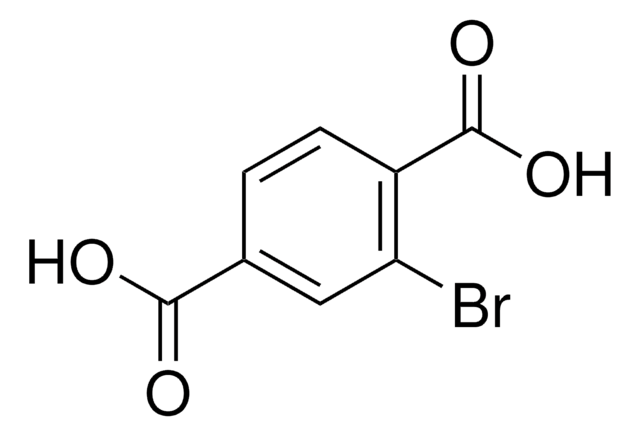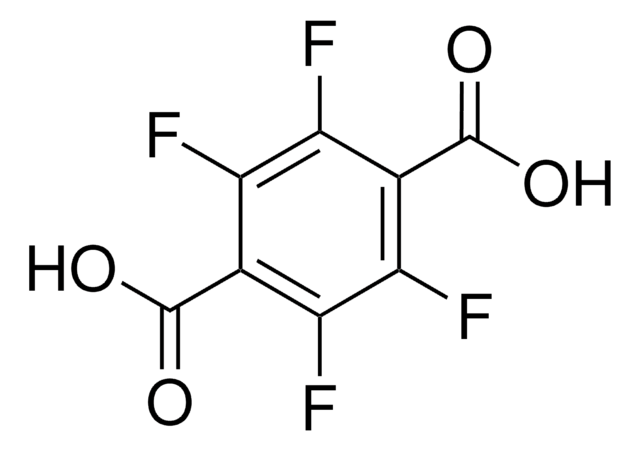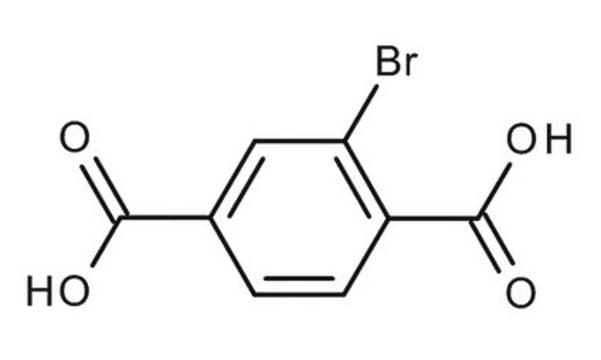381071
2-Aminoterephthalic acid
99%
Sinónimos:
2-Aminobenzene-1,4-dicarboxylic acid
About This Item
Productos recomendados
Nivel de calidad
Ensayo
99%
Formulario
powder, crystals or chunks
idoneidad de la reacción
reaction type: solution phase peptide synthesis
mp
324 °C (dec.) (lit.)
aplicaciones
peptide synthesis
cadena SMILES
Nc1cc(ccc1C(O)=O)C(O)=O
InChI
1S/C8H7NO4/c9-6-3-4(7(10)11)1-2-5(6)8(12)13/h1-3H,9H2,(H,10,11)(H,12,13)
Clave InChI
GPNNOCMCNFXRAO-UHFFFAOYSA-N
¿Está buscando productos similares? Visita Guía de comparación de productos
Aplicación
- Lanthanide coordination polymers with 1,10-phenanthroline by hydrothermal method.
- Blue-emitting derivatives of 2-aminoterephthalic acid.
- Amino-functionalized Zr-terephthalate (UiO-66), an excellent catalyst for selective synthesis of jasminaldehyde.
- IRMOF-3, a zinc aminoterephthalate metal-organic framework useful as a catalyst for the Knoevenagel condensation of benzaldehyde and ethyl cyanoacetate.
- Polymeric composite membrane with excellent CO2 separation capabilities.
Palabra de señalización
Warning
Frases de peligro
Consejos de prudencia
Clasificaciones de peligro
Eye Irrit. 2 - Skin Irrit. 2 - STOT SE 3
Órganos de actuación
Respiratory system
Código de clase de almacenamiento
11 - Combustible Solids
Clase de riesgo para el agua (WGK)
WGK 3
Punto de inflamabilidad (°F)
Not applicable
Punto de inflamabilidad (°C)
Not applicable
Equipo de protección personal
dust mask type N95 (US), Eyeshields, Gloves
Elija entre una de las versiones más recientes:
¿Ya tiene este producto?
Encuentre la documentación para los productos que ha comprado recientemente en la Biblioteca de documentos.
Los clientes también vieron
Nuestro equipo de científicos tiene experiencia en todas las áreas de investigación: Ciencias de la vida, Ciencia de los materiales, Síntesis química, Cromatografía, Analítica y muchas otras.
Póngase en contacto con el Servicio técnico










